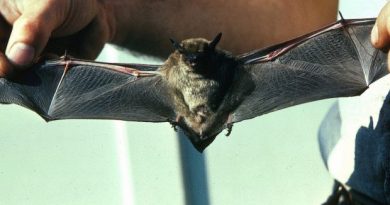Could melting Arctic sea ice be responsible for U.S. wildfires?

Melting sea ice in the Arctic plays a significant role in the increase of wildfires in the United States, thousands of kilometres away.
That’s what a team of scientists from the Pacific Northwest National Laboratory found in a recent study published in the journal Nature Communications.
Between 1984 and 2015, the number of wildfires in the western United States doubled. At the same time, according to data from the National Oceanic and Atmospheric Administration, between 1981 and 2010, the surface area of Arctic sea ice at the end of summer decreased by 13% per decade.
This melting is not likely to stop in the years to come and the most pessimistic projections even foresee a disappearance of the sea ice by 2050.
This disappearance of sea ice in the Pacific sector of the Arctic leads to warmer and drier conditions in distant states like California, Washington, and Oregon later in autumn and early winter.
“It’s not a perfect analogy, but teleconnections like this are a bit like the butterfly effect,” said Hailong Wang, an Earth scientist at the Department of Energy’s Pacific Northwest National Laboratory and coauthor of the study. He references the popular feature of chaos theory where a butterfly’s flapping wings are thought to influence the formation of a distant tornado.
“In our case, we find the Arctic region and the western United States are connected by this relationship. Regional land and sea surface warming caused by sea ice loss distantly triggers hotter and drier conditions in the West later in the year.”
Without sea ice, the ocean surface is much darker and therefore absorbs more solar radiation. This creates a vortex that strengthens in the atmosphere above the heated area.
This counter-current vortex deflects the polar jet stream from its usual path and diverts moist air from the western United States. At the same time, a second vortex, turning in the opposite direction, forms over the western United States and brings with it dry, arid conditions favorable to wildfires.
If we continue on the same trend, the Arctic will continue to melt and sharpen the contrast between these two distantly connected systems, further exacerbating conditions in an already fire-ravaged region.
As an example, more than three million acres burned in California alone during the 2021 wildfire season.
This correlation between melting Arctic sea ice and forest fires highlights another consequence of global warming.
On the positive side, this data may allow us to better predict the increase in wildfires.
“By uncovering the mechanism behind that teleconnection, we hope those in charge of managing forests and preparing for wildfires will be more informed,” explains Yufei Zou, lead author and data scientist.
But that would require spending time and money to determine how, exactly, humans are likely to be affected – and how we can mitigate that risk.
Related stories from around the North:
Canada: Blog: Business as usual for fossil fuels as polar ice melt bodes more climate chaos in 2022, Irene Quaile
Finland: Temperatures headed toward -40C in Finnish Lapland, Yle News
Greenland: Arctic Report Card 2021 – Sea ice changes, rain on Greenland ice sheet among dramatic changes in North, Eye on the Arctic
Norway: Blog: Radical Arctic warming – rain, rain, here to stay?, Marc Lanteigne
Russia: Russia’s Arctic coastline is losing 7,000 hectares per year to climate change, The Independent Barents Observer
Sweden: January temperatures about 10°C above normal in parts of northern Sweden, says weather service, Radio Sweden



